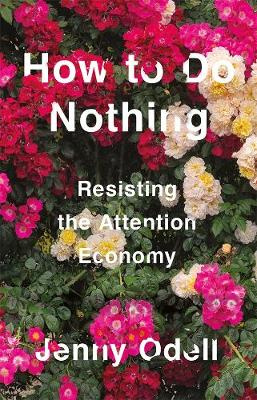 Nothing is harder to do than nothing. In a world where our value is determined by our productivity, many of us find our every last minute captured , optimized, or appropriated as a financial resource by the technologies we use daily. We submit our free time to numerical evaluation, interact with algorithmic versions of each other, and build and maintain personal brands. For some, there may be a kind of engineer’s satisfaction in the streamlining and networking of our entire lived experience. And yet a certain nervous feeling, of being overstimulated and unable to sustain a train of thought, lingers. Though it can be hard to grasp before it disappears behind the screen of distraction, this feeling is in fact urgent. We still recognise that much of what gives one’s life meaning stems from accidents, interruptions, and serendipitous encounters: the “off time” that a mechanistic view of experience seeks to eliminate.
Nothing is harder to do than nothing. In a world where our value is determined by our productivity, many of us find our every last minute captured , optimized, or appropriated as a financial resource by the technologies we use daily. We submit our free time to numerical evaluation, interact with algorithmic versions of each other, and build and maintain personal brands. For some, there may be a kind of engineer’s satisfaction in the streamlining and networking of our entire lived experience. And yet a certain nervous feeling, of being overstimulated and unable to sustain a train of thought, lingers. Though it can be hard to grasp before it disappears behind the screen of distraction, this feeling is in fact urgent. We still recognise that much of what gives one’s life meaning stems from accidents, interruptions, and serendipitous encounters: the “off time” that a mechanistic view of experience seeks to eliminate.
From the introduction to How to Do Nothing: Resisting the Attention Economy by Jenny Odell.
My phone is on silent most of the time. I leave it in the house when I’m gardening. It’s off when I’m writing. I use only a few apps. I’m not on Facebook, Twitter or Instagram. I know I annoy my friends by not being connected – and I have compromised by using Facebook Messenger – but after a brief flirtation I realised social media is addictive. And it’s not what I want to do with my time.
So in a way, Jenny Odell in How To Do Nothing is preaching to a convert. However I enjoyed having my distaste for social media and 24/7 “connectedness” clarified and explained. And it’s as simple as this: I hate knowing that my attention is being manipulated, gamed, algorithmed, stolen, bought and sold by big tech companies for money. And I try, wherever practical, to refuse to let them do it.
But this isn’t a rant, and though it’s dense, it isn’t dry reading. Odell is great company as she explores the ways individuals and communities have tried to refuse to participate in their own exploitation. She talks about the “dropping out” hippie culture of the 1960s and ’70s, sit-ins and protests and strikes, individual and collective action, parks and libraries and other kinds of non-productive public spaces. She explores hiking and bird-watching and learning about and simply being in your local environment. And above all, she talks about paying attention.
Odell’s antidote is looking and really seeing the place where you are. Being there with your mind, body and all your senses. Learning about your local environment – the geography and geology, the history, the flora and fauna. The birds – she’s big on birds. She talks about paying attention, and then deepening that attention.
Which I think equates to love, doesn’t it?

This book has been on my radar for a while, though I am very good at doing nothing already! I must guiltily admit that I have been sucked into the big whirlpool of social media, but I tell myself I could leap out at any time. Probably kidding myself… Though my social media world feels like a very benign place, compared with the horror stories I hear.
I know some people who almost exclusively use Facebook to keep in touch with their not-very-communicative far-flung kids! Seems fair enough. I just wish it didn’t benefit Zuckerberg and his billions.
I also use Facebook to keep in touch with my cousins and friends in the UK, and most of my feed consists of Chat 10, Looks 3, which is mostly people giving each other kind advice and doing favours for each other. If only the whole world was made of Chatters, it would be a better place. Oh, and kidlit folks, of course — also uniformly lovely.